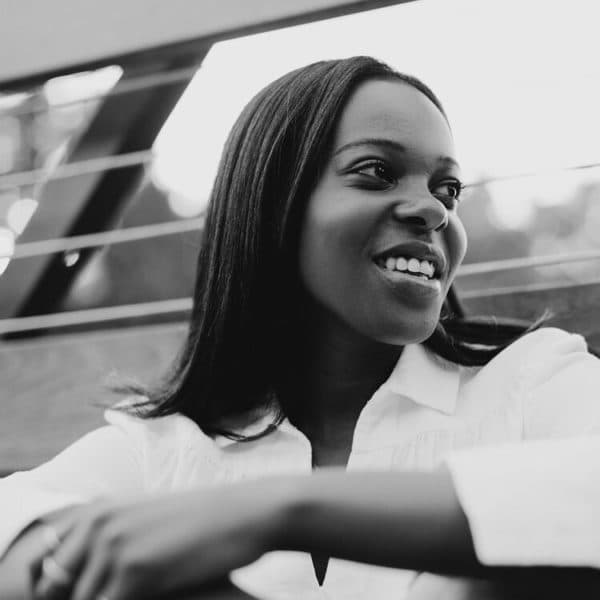Advertisement
At the Venice Biennale, artist Simone Leigh centers experience of Black women
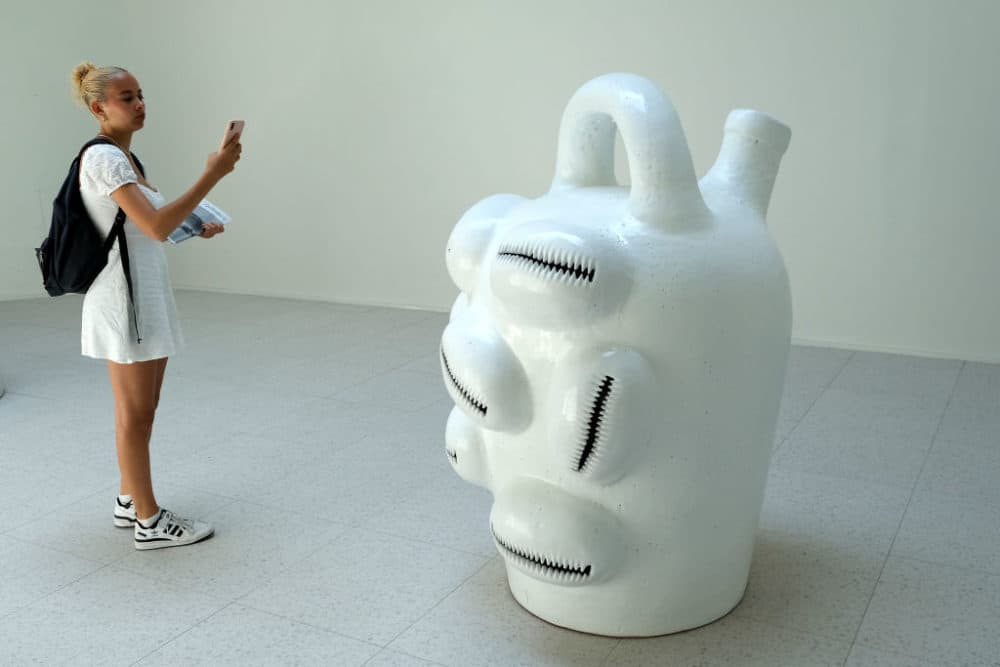
When you get to St. Mark's Square in Venice, take a right towards the Adriatic Sea. Then follow the water south, over ancient bridges, and past the city’s lively terraces. Soon enough, you’ll run right into the Giardini Biennale, the grounds which have hosted the Venice Biennale since 1895. The event is a massive international production — equal parts exhibition of some of the world’s foremost artists, a business conference and a diplomatic affair.
The Biennale grounds are dotted with buildings called pavilions, constructed by various nations. Israel sits next to the United States, and Hungary is a stone's throw away. Most of the buildings looked the same as in past years. But on opening day, Simone Leigh rendered the U.S. Pavilion unrecognizable. She is the first Black woman to be awarded the Biennale commission, and she made over the pavilion to reflect just that.

The State Department selected Boston’s Institute of Contemporary Art to curate Leigh’s work for the U.S. Pavilion at the Venice Biennale this year. Standing in front of “Satellite,” Leigh’s towering sculpture at the entrance of the U.S. Pavilion, ICA director Jill Medvedow was elated. “People are gobsmacked when they turn the corner, walk down the corridor that faces the U.S. Pavilion and see the utter transformation,” she said.
With wooden columns and thatched roofing that are reminiscent of an African palace, the building itself became a sculpture, which Leigh named “Facade.” Leigh’s reinterpretation of the Jeffersonian building is intentionally contradictory. Inspired by the Cameroon Togo Pavilion from the Paris Colonial Exhibition in 1931, Leigh’s facade draws on an event in which France displayed the buildings, the cultures, and the people under its colonial rule. “She is juxtaposing these two histories. Histories that precluded so many people, so many Black women, from sovereignty — the title of the exhibition,” said Medvedow.
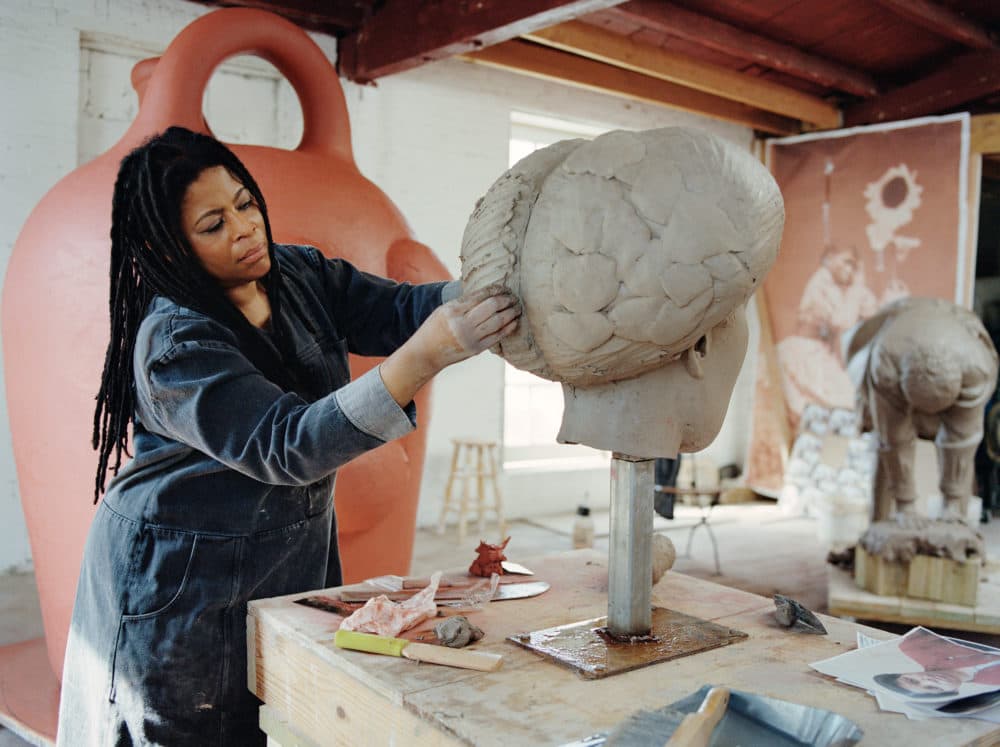
At the press conference on opening day, Leigh explained that the exhibition's title, “Sovereignty,” was her way of pointing to ideas about self-determination. “The real purpose of Black feminism is our desire to be ourselves and to have control over our own bodies,” said Leigh.
Asked about what it means to represent the United States, Leigh explained, “One idea intellectually — that's really important to me — is that we need to get rid of the idea of nationalism if we're going to go forward.” This thinking aligns with the way the artist approaches her art, which she has called a “creolization,” the blending of cultures to create something new, or in this case, the blending of material cultures and African diasporic history to conceptualize her art. Leigh’s sculptures point to something beyond national histories and cultures to a shared truth among Black women across the diaspora.
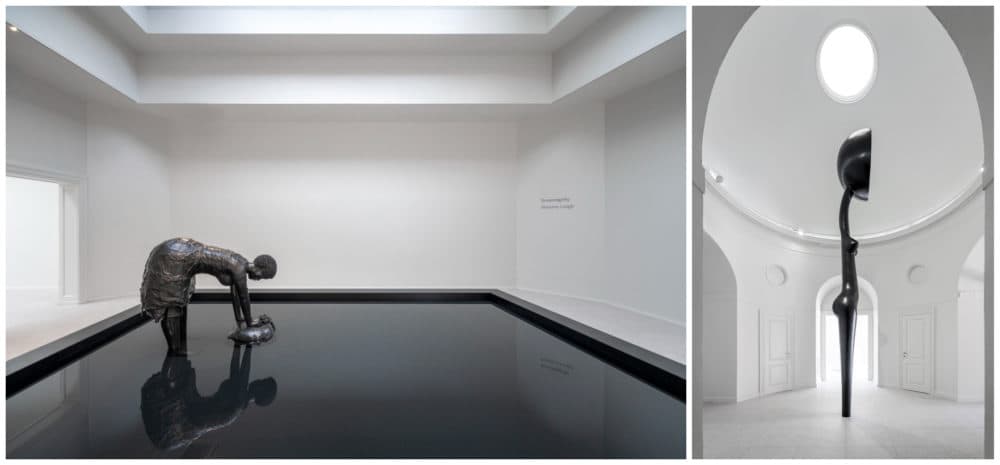
Survey the U.S. Pavilion and the thatched roofing renders the building a part of the natural environment, blending in with the surrounding greenery. Crowds formed outside of the building, where people waited in line to see the work. Delita Martin, a printmaker from Houston, looked on in awe. “It's so immersive, and it takes you into the work,” said Martin. “It actually makes me think about womanhood and my linkage to the past, my history, my cultural history, history with my family.”
"It actually makes me think about womanhood and my linkage to the past, my history, my cultural history, history with my family."
Delita Martin
Enter the exhibit, and a bronze statue of a Jamaican woman washing clothes stands in a reflecting pool. Inside, bronze and ceramic sculptures adorned with raffia and cowrie shells are arranged in stark white rooms. A film created by Leigh and Madeleine Hunt-Ehrlich depicting a burning effigy plays in the background. “Sentinel,” a 16-foot-tall sculpture, stands in the rotunda gallery of the exhibition, drawing visitors' eyes up. Lewis Long, the founder of Long Gallery Harlem, was one such visitor. “It’s strong, tall, taking up space, holding space, commanding it,” said Long.
While deeply researched, Leigh’s works are minimalistic, emotive and inventive. That’s what struck Jalan and Jibril Durimel, a pair of twin photographers visiting Venice from Paris. “Because of the intensity and violence of our history, it's almost like we have this obsession of revisiting it,” explained Jalan. The two agreed that, at times, the topics Black artists take on are so heavy that the work can get lost in the meaning. But they found Leigh’s work to be the opposite. “Maybe I'm reductive, but when I saw the show, it just touched me in a sense of beauty and form,” said Jibril. "It moved me in that way, and I was happy, and I was satisfied and inspired from that alone.” Although the art is inspired by Black history and culture, there was a lightness.
Advertisement
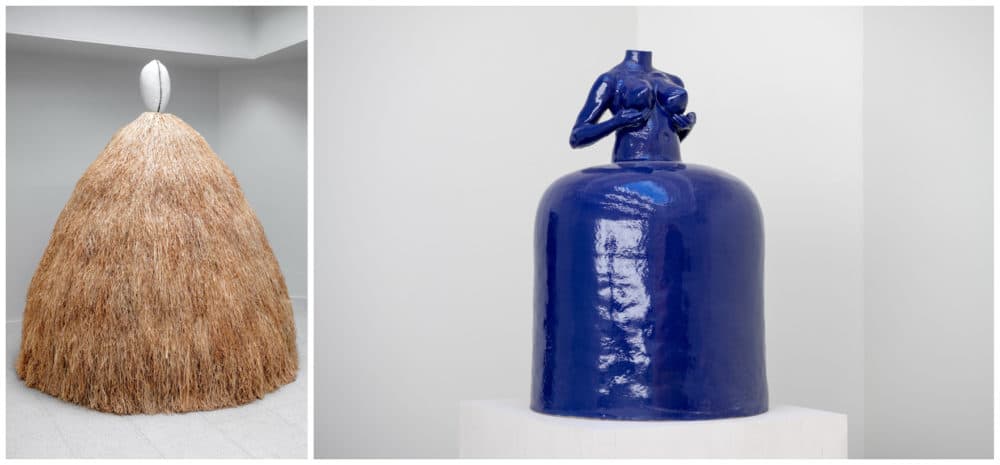
“Some artists try to reach you intellectually, conceptually. It doesn't make you feel very good,” explained Andrea Seehusen, a visitor and art advisor from Munich. She said she felt that walking through the exhibition was an experience of pure beauty and described Leigh’s sculptures as inviting. “I think she has found a way just to get in everyone's hearts, and that's what it's supposed to be, so to make a more inclusive community,” said Seehusen.
Even though Leigh’s statues are striking regardless of the viewer's background, she has been clear about the fact that her primary audience, like her inspiration, is Black women. Shante Mitchell, a visitor from Memphis, said that the bronze and ceramic sculptures made her feel connected. “I'm not by myself in some of the things that I think about and feel,” said Mitchell. “And she put it in art.”
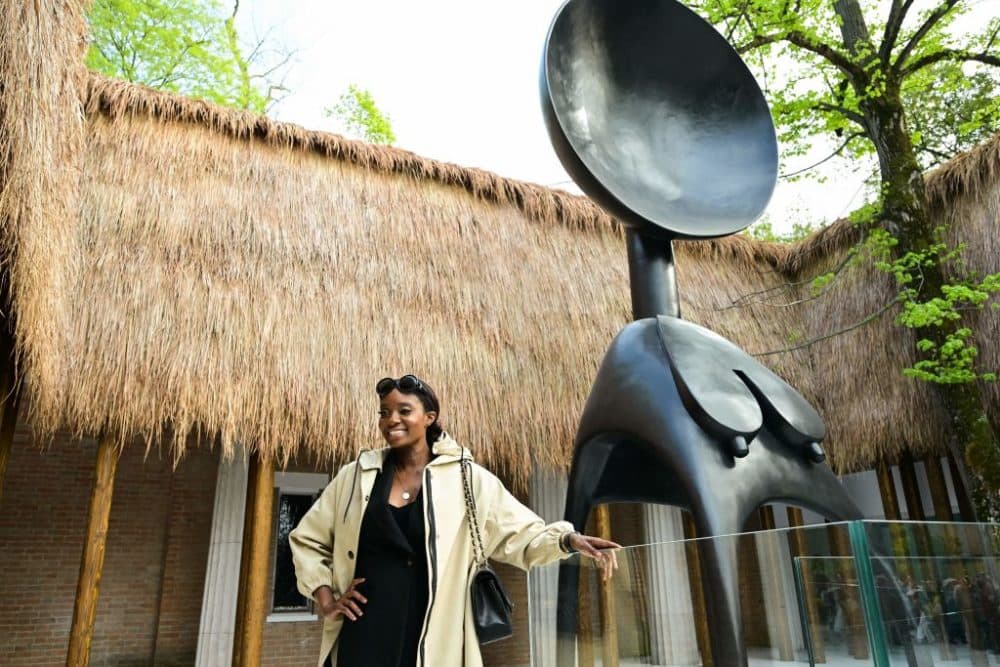
During opening week, Leigh won the Golden Lion for the Best Participant in the International Exhibition. In October, the artist will host “Loophole of Retreat,” a series of lectures hosted by Black academics, writers and artists in Venice. After that, her works will return to the United States where the ICA is organizing the artist's first major survey exhibition. The first stop of the traveling tour will be in Boston, at the ICA.
This segment aired on May 13, 2022.
